 W
WThe Angola colobus, Angolan black-and-white colobus or Angolan colobus, is a primate species of Old World monkey belonging to the genus Colobus.
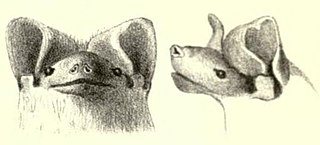 W
WThe Aztec mastiff bat is a species of bat in the family Molossidae. It is found from Jalisco and Cozumel Island in southern Mexico to Nicaragua in a variety of forest habitats at elevations from near sea level to 1300 m. It has also been reported from southern Venezuela. The species' diet is insectivorous.
 W
WThe Aztec mouse is a species of rodent in the family Cricetidae, native to southern Mexico and parts of Central America.
 W
WThe buffy flower bat is a species of bat in the leaf-nosed bat family, Phyllostomidae. It is found in the Bahamas, the Cayman Islands, Cuba, and Jamaica.
 W
WThe cacomistle is a nocturnal, arboreal and omnivorous member of the carnivoran family Procyonidae. Its preferred habitats are wet, tropical, evergreen woodlands and mountain forests, though seasonally it will venture into drier deciduous forests.
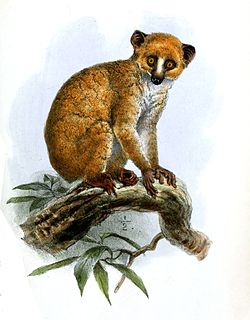 W
WThe Calabar angwantibo, also known as the Calabar potto, is a strepsirrhine primate of the family Lorisidae. It shares the genus Arctocebus with the golden angwantibo. It is closely related to the potto and to the various lorises.
 W
WThe Cuban flower bat, also called Poey's flower bat, is a species of bat in the family Phyllostomidae. It is found in Cuba, Haiti and the Dominican Republic.
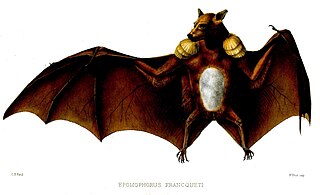 W
WFranquet's epauletted fruit bat is a species of megabat in the family Pteropodidae, and is one of three different species of epauletted bats. Franquet's epauletted fruit bat has a range of habitats, varying from sub-saharan forest to equatorial tropics.
 W
WThe greater broad-nosed bat is a species of bat in the family Phyllostomidae. It is found in Bolivia, Colombia, Costa Rica, Ecuador, Panama, Peru, and Venezuela.
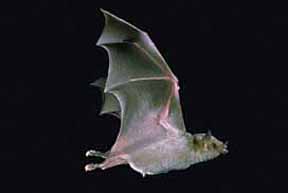 W
WThe greater long-nosed bat or Mexican long-nosed bat is a species of bat in the family Phyllostomidae. It is found in Mexico and the United States. It chiefly consumes pollen and nectar, particularly from Agave plants and cacti. Its habitat includes desert scrub and open woodlands. It is threatened by habitat loss.
 W
WThe hairy big-eyed bat is a bat species from South and Central America.
 W
WMelanomys caliginosus, also known as the dusky melanomys or dusky rice rat, is a species of rodent in the genus Melanomys of family Cricetidae. It is found from Central America, in Honduras, Nicaragua, Costa Rica, and Panama, into South America, where it occurs in Venezuela, Colombia, and Ecuador. Populations currently classified under M. caliginosus may in fact include more than one species.
 W
WThe Mexican agouti is a species of rodent in the family Dasyproctidae. It is native to Mexico, and has been introduced to Cuba. It is rated Critically Endangered on the IUCN's red list.
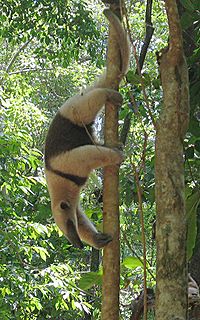 W
WThe northern tamandua is a species of tamandua, an anteater in the family Myrmecophagidae. They live in tropical and subtropical forests from southern Mexico, through Central America, and to the edge of the northern Andes.
 W
WOligoryzomys fulvescens, also known as the fulvous colilargo, fulvous pygmy rice rat, or northern pygmy rice rat, is a species of rodent in the genus Oligoryzomys of family Cricetidae. It is found from southern Mexico through Central America into South America, where it occurs south into Peru and Brazil, and includes numerous synonyms, including the type species of the genus, Oryzomys navus Bangs, 1899. The taxonomy of this species is unresolved, and it may be found to contain more than one species. Its karyotype has 2n = 54-60 and FNa = 68–74.
 W
WThe ornate cuscus or Molluccan cuscus is a species of marsupial in the family Phalangeridae. It is endemic to Indonesia, where it is found on the North Maluku islands of Halmahera, Bacan and Morotai, at elevations from sea level to 1000 m.
 W
WThe red-legged pademelon is a species of small macropod found on the northeastern coast of Australia and in New Guinea. In Australia it has a scattered distribution from the tip of Cape York Peninsula in Queensland to around Tamworth in New South Wales. In New Guinea it is found in south central lowlands.
 W
WSumichrast's vesper rat is a rodent of the family Cricetidae found from southern Mexico to Panama. It is named for the collector of the first specimen, and its closest relative is probably Hatt's vesper rat, a similar, but slightly smaller, species from the Yucatán Peninsula.
 W
WThe Toltec fruit-eating bat is a species of bat in the family Phyllostomidae. It is also sometimes called the "lowland fruit eating bat."
 W
WTome's spiny rat, also known as Tomes' spiny rat or the Central American spiny rat, is a species of spiny rat distributed from Honduras to Ecuador. The IUCN has assessed its conservation status as being of "least concern".
 W
WThe white-footed saki, buffy saki or white saki is a species of saki monkey, a type of New World monkey, endemic to western Brazil south of the Amazon.